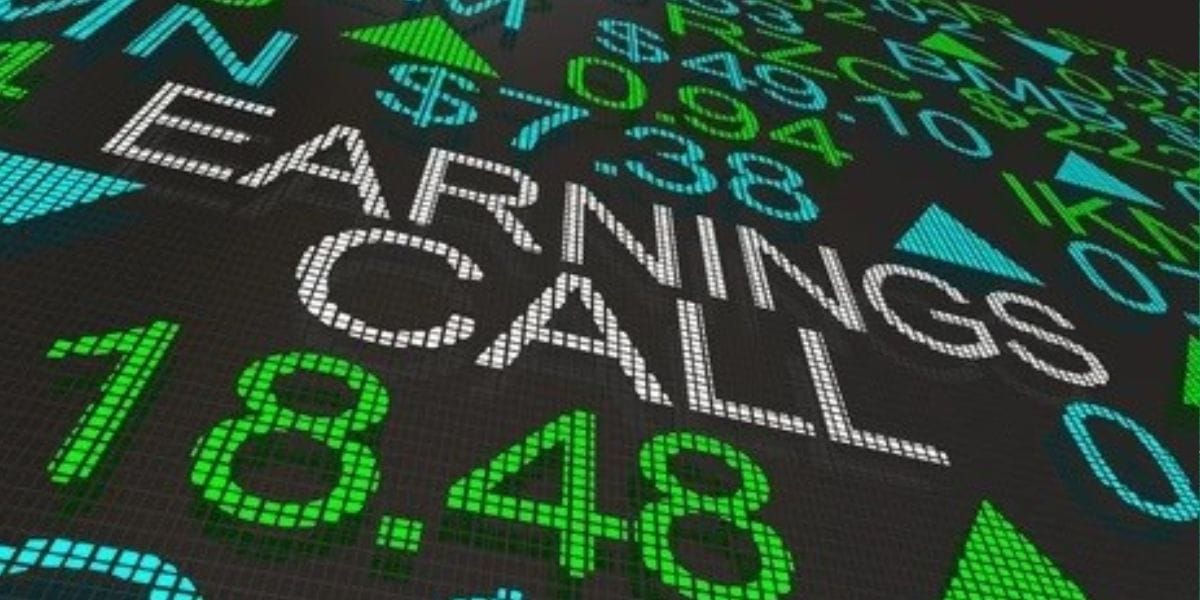Short answer:
Spaceship Voyager is three managed funds, which directly invest in shares, available on the Spaceship app. We call our managed funds our Spaceship Voyager portfolios.
- The Spaceship Universe Portfolio is invested in world-changing companies we believe meet our “Where the World is Going” criteria (such as Amazon).
- The Spaceship Origin Portfolio takes a rules-based approach, and invests in some of the world’s largest companies (such as Berkshire Hathaway).
- The Spaceship Earth Portfolio is invested in companies that have a positive impact on people and the planet (such as Atlassian).
This means we manage your money for you.
Long answer:
- What stops people from investing in shares?
- What does a broker do?
- What is a managed fund?
- What are the differences between Spaceship and a broker?
- What's a unit trust structure?
- Should you make investing a habit?
- What does Spaceship Voyager invest in?
- What are the fees?
- How can you learn more?
1. What stops people from investing in shares?
One of the reasons people avoid investing in shares, is they don’t know which shares to pick.
Professional investors often spend their days calculating precisely which companies are likely to make the most profits or grow the most, and then allocating their money (or the bank’s money) into those companies via the share market.
The investors that do well strut around town, informing lesser mortals of their double digit investment returns, and the ones that do badly mumble quietly and glower.
These sophisticated investment professionals will always seek out an edge using data, computing power, relationships and years of experience while the rest of us kind of sit back and watch them make money.
But there are ways that we - people who spend their days doing literally everything else other than thinking about the share market - can get in on the money making.
And like most things in life, it’s by cooperating.
2. What does a broker do?
Once upon a time, if you had a bit of extra money, you might have engaged your broker (let's call him Greg) to give you investment advice.
Greg would scope out the available opportunities in the share market and talk shop with his investor mates, and build complicated models that would tell him to tell you that the Company XYZ share price is going to increase over time.
You would think about it a bit, be impressed by Greg’s modelling and then maybe agree to invest your money in Company XYZ. You and Greg would also settle on a fee for Greg’s complicated modelling and also work out how much of any gains Greg would take should shares in Company XYZ go up.
Greg’s price is usually pretty high because of, you know, the complicated modelling.
And Greg generally also had a rule that he wouldn’t get out of bed for less than a certain investment amount, which was generally also pretty high.
So if you had a smaller amount of money but still wanted to know if Company XYZ was going to go up, Greg would probably smile a bit and tell you to come back when you were richer.
If Greg turned out to be right about Company XYZ, as well as Company ABC, DEF, GHI and a bunch of other shares over a number of years he might decide he’s pretty good at this investing caper and set up his own managed fund.
3. What is a managed fund?
A managed fund is where a group of people give someone (or a team) their money to invest on their behalf, because the group would rather do literally anything else other than worry about the sharemarket.
Greg - as the manager of the fund - would decide on a “pre-determined investment mandate” which is like a set of rules everyone agrees on.
These might be: we only like robotics companies or we don’t invest in coal companies or “we will return 3% more than the rest of the market, or so help us God”.
Then Greg would generally buy between twenty and thirty stocks and keep an eye on them. He would monitor things such as annual reports, information about each company and their customers, think about whether or not management was doing a good job and what their competitors were doing.
Managed funds can be useful because they usually have a larger pool of money which allows the manager to buy in bulk (and save on the cost of transactions because of the sheer size of the orders). The pool also allows access to international shares (which is not always unique) but also perhaps shares of companies that haven’t even become public yet.
Everything in finance is kind of geared towards bigger numbers. The more money you’ve got to play with, the more avenues you can explore. Usually.
That’s why the cooperation of all the members who pool their money together can be quite powerful.
But of course, Greg isn’t going to manage all that money for free; he’s going to scoop a percentage fee of all the money under management and also receive a performance fee, if he’s right about the shares he’s picked.
And so folks like Greg can sometimes end up being extremely well paid. Warren Buffett started out as a Greg.
So that’s what a managed fund is.
Where lots of people pool their money together, and someone invests it on their behalf.
4. What’s different about Spaceship Voyager?
Spaceship Voyager is kind of like Greg, but with some key differences.
Like Greg, we have created managed funds (three actually), where you can put your money in with other investors and we will invest it on your behalf.
Except, unlike Greg, we will let you invest as little or as much as you like. We have no minimum on the amount of money you’d like to put in. It can be $5, $50, $500 or whatever.
That’s rather a unique thing in Australia because investing usually has a minimum investment amount.
The second difference is Spaceship will charge you a fraction of what Greg will, because we’ve basically automated a lot of his day to day job.
Exposure to a range of companies means we are less susceptible to the performance of any individual one. We are leveraging the power of averages.
I’m now going to switch from Greg to Spaceship here and discuss what you’re actually buying.
5. What’s a unit trust structure?
To make sure a fund manager (either Greg or Spaceship) can keep track of the money pooled in the fund, the fund issues "units" in return.
These units are recognised by Australian trust law and are valid financial assets. They are also a neat way of calculating which portion of the fund belongs to you.
The amount of units you get depends on how much money you put into the fund and the unit price.
So, if the unit price is $1 and you put $1,000 into the fund, you’ll get 1,000 units.
The value of the unit (called the unit price) moves up and down depending on how the fund is performing.
If the fund performs well - and the share prices of the companies it’s invested in go up - then the unit price will reflect that and go up too.
If the unit price appreciates to $1.20, your 1,000 units are now worth $1,200.
The reverse will happen when the company share prices go down.
The value of the fund always reflects the value of all the assets held in that fund and is expressed in the unit price. (I.e. The total value of the portfolio divided by the number of units we’ve issued).
This unit structure method is really useful when you’re buying small lots.
Important! The unit price will not always go up. One of the risks of investing is that it’ll go down. But as economies grow and money circulates around businesses and people, more and more of it ends up in shares, which generally pushes the market higher over the long term.
Spaceship Voyager is intended to encourage that kind of long term investment thinking, so you can build wealth in a way that isn’t overly intrusive.
6. Should you make investing a habit?
At Spaceship we think there’s real value in making investing a habit.
And rather than having all your money sit as a lump sum in your bank account, your spare cash could be invested in the share market, which generally grows in value over time.
In response to that, Spaceship designed an app as a way for people to make investing their money a habit.
It really doesn't have to be much.
Some folks who don’t need $5, or $50, or $500 to live their life right now, are putting it in the fund, getting some units, and forgetting about it for a while.
Investing can help you build wealth to achieve your financial goals in the future.
Or some folks are considering setting up a weekly investment plan of $5, get some units every week, and forget about it for a while.
Australia’s fantastic superannuation system is based off a regular investment model: 10% of your salary is withheld every cycle and is invested on your behalf.
Because that money vanishes before it even lands in your hot little hands, it’s very rare that you’ll miss it. Yet it makes a huge difference to your quality of life when you retire.
If you can set up a similar system for your investment goals, where a portion of your income vanishes before you even see it, you’d be surprised at how quickly you can build a handy stash of money.
Having a backstop of extra money can be powerful; it can give you some breathing space if you’d like to retrain and look for another job, it can help give you opportunities to move about the world and learn more, it could contribute towards a house for you and a family you might like to have, and it can also help protect you if something happens to your health.
I don’t really need to bang on about this.
You know having extra money is helpful, but you also probably know it’s really difficult to actually save and people get stuck living week to week or burdened with poisonous credit card debt.
Spaceship Voyager is a tool to build a pool of your money which leverages the power of the share market.
We’ve designed it so you don’t have to educate yourself as a stock-picking investor (unless you’d like to).
Greg can stick to the day-to-day research, you can go and do literally anything else.
7. What does Spaceship Voyager invest in?
Now let’s talk about the actual share buying part.
Remember, Spaceship takes the money you’ve swapped for units and then uses that money to buy shares in overseas and Australian companies.
You can decide to get units in three Spaceship managed funds: the Spaceship Universe Portfolio (yes, yes, sounds very startup), the Spaceship Earth Portfolio, and the Spaceship Origin Portfolio. Collectively, we refer to these funds as Spaceship Voyager.
Spaceship is the name of the app you use to set up your Spaceship Voyager investments, check your balance and understand which shares your chosen funds own.
It’s not a platform where you can actually choose the shares themselves.
What companies are in the Spaceship Universe Portfolio?
For the Spaceship Universe Portfolio, we have chosen 70 to 100 overseas and Australian companies.
In the Spaceship Universe Portfolio, we are investing where the world is going. The largest companies in the world now are the Googles and the Amazons and the Alibabas, and many businesses are adapting their models to include deep technological processes.
We have included all of these businesses and more in the portfolio.
The great thing is, by holding units you are like a fractional owner of all of the assets of the portfolio so you get an exposure to these companies. Mathematics is really brilliant like that.
You can view every single company (each with an individual explainer on what the company does and why we like it) in the Spaceship app or on our website. If you have some spare time, maybe give them a read. (We’ve explained them out in plain English, like this post).
As these companies grow and evolve, we think their share prices will go up over time and increase the value of the Spaceship Universe Portfolio. Which means the unit price may rise and the value of your portfolio could increase.
Important! Financial markets move around and sometimes there is a selloff or other event impact share prices. When that happens, share prices go down and the unit price may fall.
The Spaceship app is designed as a habitual investment app, so you can just add little blocks of units over time but sometimes your unit values will decrease. We take a long term view to investing and think generally market volatility should be ridden out.
Sometimes individual businesses perform badly and their share prices might fall.
Don’t stress about this overly; there are so many companies in the Spaceship Voyager portfolios, that the loss in one company will normally have a muted impact on the overall performance. We have deliberately made our exposure so broad that we are leveraging the entire lot.
That also means when one company does blisteringly well, that will also have a muted effect on the whole portfolio. This is a slow and steady journey.
The Spaceship Origin Portfolio
The second fund, the Spaceship Origin Portfolio, takes a rules-based approach.
Whereas the Spaceship Universe Portfolio is home to global and local businesses, the Spaceship Origin Portfolio is home to big businesses in general.
The Spaceship Origin Portfolio includes around:
- 100 of some of the largest Australian companies, and
- 100 of some of the largest international companies, irrespective of which sector they operate in.
This includes the likes of Australia’s big four banks, the big miners, as well as Coca-Cola, Berkshire Hathaway and McDonald’s.
These companies are typically established and are normally growing more slowly than the companies in the Spaceship Universe Portfolio, but because they tend to be so established, they generally don’t suffer the same share price moves as growing technology companies.
The whole design of the Spaceship app is to provide you with an opportunity to invest in the sharemarket without having to pick individual companies; that’s for folks like Greg.
The Spaceship Earth Portfolio
Our third fund, the Spaceship Earth Portfolio, is designed to give you exposure to companies that have a positive impact on people and the planet. We pick these companies because they contribute to the UN Sustainable Development Goals. We also use a negative screening process to ensure we don’t invest in companies with exposure to issues such as fossil fuels or human rights abuses. These companies include innovators such as Atlassian and Etsy.
8. Fees
Back to Greg. Researching and selecting specific companies to include in his fund is his full time job. So he’s likely going to charge you when the fund performs well. That’s called a performance fee.
And because he’s made sure you understand he might not always pick a winner, he’s still going to charge you a management fee (which is generally a percentage of all the money he manages).
Spaceship is a tech company trying to get as much money under management as possible so it has as much buying power as possible to deliver competitive pricing to you, the customer.
Meaning we want as many users as possible to add as much money as they like, so we can introduce new features and build new financial products to help our generation's money become more money.
And because we’ve invested in so many different companies, we’ve spread the risk quite broadly.
And while we carefully monitor and have guidelines about what we are comfortable investing in, we are extremely long term investors so we don’t rejig the portfolio unless we really think the company is not going to return value or there is a shift in the industry. (Or, in the case of the Spaceship Origin Portfolio, where the rules-based approach requires a change.)
We’re just as obsessed as Greg is with finding companies that perform well and give you long-term returns. But because we have our Where The World is Going methodology, we don’t rejig nearly as much as Greg might, and we're focused on making this accessible to younger people, so we can normally be a lot cheaper.
Here’s where you can find out about the fees we charge for the Spaceship Voyager portfolios.
9. Spaceship Learn
So much of finance can be difficult to understand.
So even super bright people baulk at language like “consolidated debt obligations” or “put options” or “credit default swaps.”
Aside from our three funds, we’re committed to providing a steady stream of clear information around investing habits, techniques and strategies to adapt your way of thinking and a news flow so you’re generally aware of what’s happening to the companies in your portfolios.
This whole Spaceship caper is based on the premise that young people should have an easy way to have exposure to the sharemarket.
So we built three, really affordable managed funds, which we call our portfolios.
For our Spaceship Universe Portfolio, we've picked shares that are set to grow steadily through the next phase of technological evolution. For our Spaceship Earth Portfolio, we’re helping to invest in companies that have positive impacts on people and the planet. And for our Spaceship Origin Portfolio? We’ve captured the market by investing in some of the largest companies in Australia and the world, and we figured it would be helpful to allow you to invest as little as you like.
This is all about exposure and simplicity.
Apologies for the billion words, but we figured it was worth explaining out.
Last updated 20 September 2021



